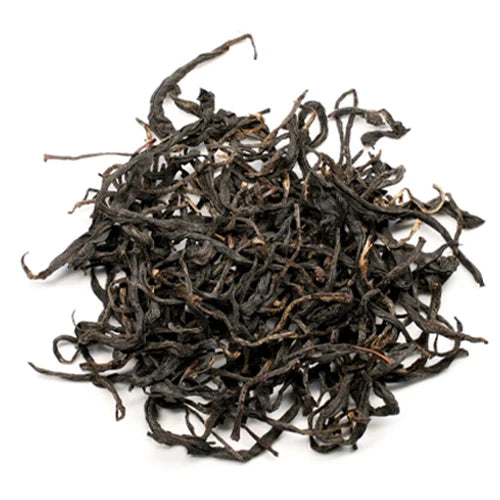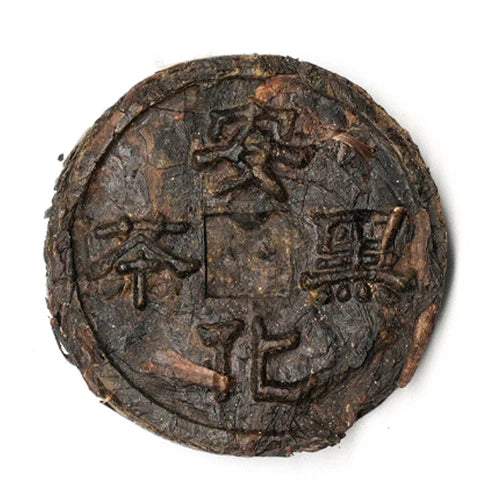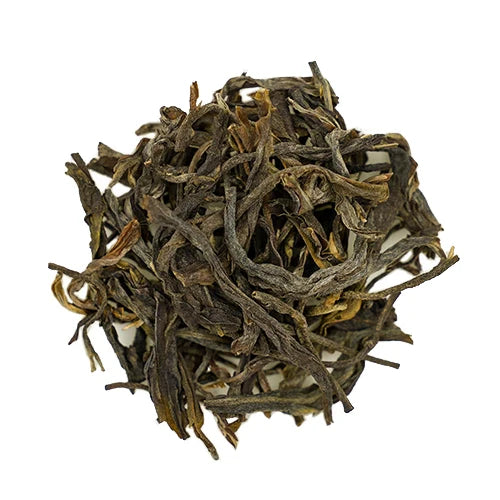Introduction
Oolong tea, with its rich flavor and unique characteristics, has captivated tea enthusiasts around the world. As a traditional Chinese tea, it offers a delightful balance between the freshness of green tea and the depth of black tea. One aspect that often intrigues tea enthusiasts is the caffeine content in Oolong Tea. In this comprehensive guide, we will delve into the fascinating world of Oolong Tea and explore its caffeine content. Additionally, we will provide valuable insights into selecting the right Oolong Tea, brewing techniques to unleash its flavors, and proper storage methods to maintain its freshness.
I. Caffeine in Oolong Tea
Before diving into the specifics of Oolong Tea, it is essential to understand caffeine in tea. Caffeine is a naturally occurring compound found in tea leaves, belonging to the class of xanthine alkaloids. It is responsible for the stimulating effects associated with tea consumption. However, compared to coffee, tea contains lower levels of caffeine, making it a popular choice for those seeking a milder energy boost.
The caffeine content in Oolong Tea varies depending on various factors. Leaf age and size, growing conditions such as altitude, climate, and soil composition, as well as tea processing techniques, all play a role in determining caffeine levels. It is noteworthy that Oolong Tea generally contains less caffeine compared to black tea but more caffeine compared to green tea.

II. Selecting Oolong Tea
When embarking on the journey of exploring Oolong Tea, it is crucial to understand the different varieties available and their unique characteristics. Two renowned Oolong Tea varieties worth exploring are TieGuanyin and Minnan Narcissus.
TieGuanyin, a genuine and authentic Anxi Oolong Tea, originates from a region surrounded by mountains and veiled in mist. Anxi's favorable climatic conditions, including an average annual temperature of 15-18℃, a frost-free period of 260-324 days, and an annual rainfall of 1700-1900mm, contribute to the unique flavor of TieGuanyin tea trees. In fact, the 300-year-old TieGuanyin has been honored with the prestigious "Global Important Agricultural Cultural Heritage" certificate.
Minnan Narcissus, on the other hand, is a sought-after Oolong Tea variety from Fujian Province. This tea has undergone Japanese Organic Food Safety Tests, ensuring its quality and authenticity. Minnan Narcissus boasts tea leaves from 60-year-old tea trees, which metabolize carbonaceous compounds and result in higher sugar and polyphenol content. The leaves from old trees produce dense, smooth, sweet, and thick brews. The misty high mountains where Minnan Narcissus is grown contribute to lusher vegetation, higher organic matter content in the soil, and an extreme day and night temperature difference that promotes the accumulation of tea substances in the leaves.
When selecting the best loose leaf tea of Oolong Tea, it is essential to consider the flavor profile and characteristics of each variety. TieGuanyin offers a delicate and floral taste with a lingering sweetness, while Minnan Narcissus provides a rich and aromatic experience with its high sweetness and resteepable leaves. To ensure authenticity, it is recommended to source the best loose leaf tea of Oolong Tea from trusted suppliers who prioritize quality and maintain a reputation for genuine products.
III. Brewing Oolong Tea

To fully appreciate the flavors and nuances of Oolong Tea, proper brewing techniques are essential. Here are some considerations for achieving an optimal brew:
1. Water temperature and steeping time: Oolong Tea is sensitive to water temperature, and the ideal range varies depending on the variety. Generally, a water temperature between 180-200°F (82-93°C) is suitable for most Oolong Teas. Steeping times can range from 1-5 minutes, depending on personal preference and desired flavor intensity. Experimentation is encouraged to find the perfect balance.
2. Brewing methods: Traditional brewing methods such as Gongfu Cha can enhance the Oolong Tea experience. Gongfu Cha involves using smaller teaware and multiple short infusions to extract the full range of flavors. Alternatively, Western-style brewing with larger teapots or infusers is also a popular approach. The choice of brewing method depends on personal preference and the time available for tea preparation.
3. Tea-to-water ratio: Achieving the right tea-to-water ratio is crucial for a well-balanced brew. As a general guideline, 1 teaspoon of Oolong Tea per 8 ounces (240 ml) of water is a good starting point. Adjustments can be made based on personal preference for a stronger or milder brew.
IV. Storing Oolong Tea
Proper storage is vital to maintain the freshness and flavors of Oolong Tea over time. Here are some key considerations:
1. Storage conditions: Oolong Tea should be protectedfrom moisture, light, and strong odors. It is best to store Oolong Tea in airtight containers made of opaque materials, such as ceramic or tin. These containers will shield the tea leaves from exposure to air and light, preserving their flavors and aromas.

2. Shelf life and freshness: Oolong Tea is best consumed within a certain timeframe to ensure optimal taste. While the shelf life of Oolong Tea can vary depending on the variety and processing methods, it is generally recommended to consume it within 6-12 months of purchase. As time passes, the flavors of Oolong Tea may change, becoming more mellow or developing different notes. Regularly assessing the tea's freshness and adjusting brewing parameters accordingly will help maintain a delightful tea experience.
Conclusion
In conclusion, exploring the caffeine content in Oolong Tea provides valuable insights for tea enthusiasts and consumers. Understanding the factors that influence caffeine levels, such as leaf age, growing conditions, and tea processing techniques, allows for informed choices when selecting Oolong Tea varieties.
TieGuanyin and Minnan Narcissus stand out as remarkable Oolong Tea varieties, each with its own unique flavor profile and characteristics. Proper brewing techniques, considering water temperature, steeping time, and tea-to-water ratio, enable tea lovers to unlock the full potential of these teas and enjoy a delightful tea experience.
Lastly, the proper storage of iTeaworld loose leaf tea is crucial for maintaining its freshness and flavors. Shielding the tea leaves from moisture, light, and strong odors through appropriate storage containers ensures the longevity of the tea's quality.
At iTeaworld, we are passionate about bringing you the finest selection of Oolong Tea varieties, including TieGuanyin and Minnan Narcissus. Explore our wide range of teas and embark on a journey of exquisite flavors and aromas. Start your tea adventure with iTeaworld today.







































































